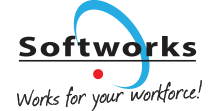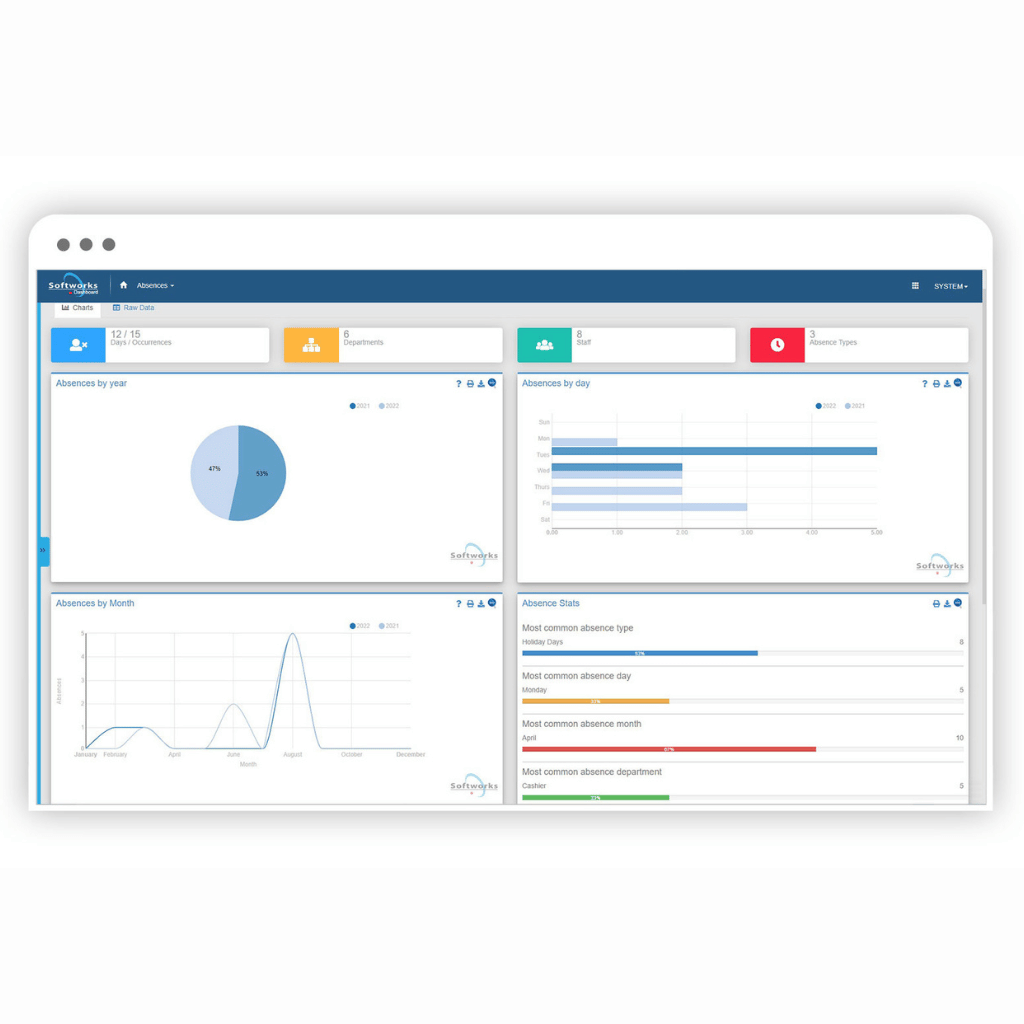Employee absence management is an inevitable aspect of any organization’s operations. Whether due to illness, personal reasons, or legal requirements, managing employee absences effectively is crucial for maintaining productivity, ensuring employee well-being, and adhering to labor laws. Absence management is not merely about tracking time off; it encompasses a comprehensive approach to address various types of absences and their impact on the workplace.
In this guide, we will delve into the world of absence management and explore the best practices that can empower HR professionals to create a resilient and thriving workforce. We will cover everything from understanding different absence types to assessing their true costs and implementing effective strategies
By adopting best practices and leveraging advanced software solutions, businesses can navigate the challenges of employee absences, create a resilient workforce, and achieve sustained success in today’s dynamic and competitive landscape.
Definition and Importance of Employee Absence Management
Employee Absence management can be defined as the strategic process of proactively managing and addressing employee leaves of absence in an organization. It involves developing policies, procedures, and practices to handle various types of absences, both planned and unplanned while ensuring compliance with relevant labor laws and regulations.

The importance of effective absence management cannot be overstated. It is a critical aspect of human resource management that directly impacts an organization’s productivity, financial performance, and employee well-being.
Let’s explore the key reasons why absence management is of paramount significance:
Absence management is an essential component of successful human resource management. Its strategic implementation not only ensures operational efficiency and cost control but also supports a healthy work environment and strengthens employee engagement. Embracing best practices in absence management empowers organizations to build a resilient and thriving workforce, poised for sustainable growth and success.
Different Types of Absences
Absences in the workplace can be classified into various categories based on their nature and occurrence. Understanding these different types of absences is essential for effective absence management.

Scheduled Absences
Scheduled absences refer to planned leaves that employees arrange in advance with their supervisors or HR departments. These absences are typically for personal reasons or specific events and are known to the organization well ahead of time. Some common examples of scheduled absences include:
• Vacation Leave: Time off taken by employees for leisure, travel, or personal activities.
• Personal Days: Additional leave days provided to employees for personal reasons not covered under other leave categories.
• Planned Leaves: Leaves requested by employees for events such as weddings, family functions, or educational pursuits.
Scheduled absences offer the advantage of predictability, enabling organizations to plan workforce schedules and allocate resources accordingly. HR teams can effectively manage these absences through clearly defined leave policies, ensuring minimal disruption to business operations.
Unscheduled Absences
Unscheduled absences are unexpected or unplanned leaves that employees take due to illness, emergencies, or unforeseen circumstances. These absences often require prompt action and can pose challenges for organizations. Common examples of unscheduled absences include:
• Sick Leave: Time off taken by employees due to personal illness or injury.
• Emergency Leave: Unforeseen time off required for emergencies, such as a family member’s medical crisis or a natural disaster.
• Unexpected Absences: Leaves taken due to sudden situations that prevent an employee from attending work, such as car accidents or personal emergencies.
Unscheduled absences can disrupt workflows and affect productivity if not managed effectively. It is essential for HR professionals to have contingency plans in place and maintain open communication with employees to understand the reasons behind such leaves.
Leave under Legal Regulations
In many countries, employees are entitled to specific types of leave under labor laws, either at the federal or state level. These legal regulations may grant employees various types of leave, such as:
• Maternity and Paternity Leave: Paid or unpaid leave provided to new parents following the birth or adoption of a child.
• Family and Medical Leave: Job-protected leave for qualified medical and family reasons.
• Military Service Leave: Leave provided to employees serving in the armed forces.
• Jury Duty Leave: Leave given to employees summoned for jury service.
Managing leaves under legal regulations requires HR teams to stay informed about the applicable laws and ensure compliance. It is essential to handle these leaves sensitively and supportively, considering the impact they may have on both the employee and the organization.
By recognizing and categorizing the different types of absences, organizations can develop tailored absence management strategies and policies that address the unique challenges presented by each category. An efficient absence management approach contributes to a harmonious work environment, improved productivity, and better overall employee satisfaction.
Long-term vs. Short-term Absences
Long-term and short-term absences are two distinct categories of employee leaves, each with its own implications for the workplace. Understanding the differences between these types of absences is vital for effective absence management.
Let’s explore these categories and their impact on the workplace.

Defining Long-term Absences and Their Impact on the Workplace
Long-term absences refer to extended periods of leave taken by employees due to serious medical conditions, injuries, or other significant life events. These absences typically last for several weeks or months and can create challenges for employers and teams. Common examples of long-term absences include:
• Extended Medical Leave: Leave taken for recovery from major surgeries or severe illnesses.
• Maternity or Paternity Leave: Extended leave taken by new parents following the birth or adoption of a child.
• Rehabilitation Leave: Leave taken for rehabilitation after injuries or accidents.
Long-term absences can have substantial implications for the workplace, including a temporary loss of skilled employees, reduced team productivity, and increased workloads for remaining staff. Effective absence management strategies for long-term absences involve providing support to the absent employee, maintaining open communication, and planning for a smooth return-to-work transition.
Understanding Short-term Absences and the Bradford Factor
Short-term absences, on the other hand, refer to frequent and brief periods of leave taken by employees for various reasons, such as illness, personal emergencies, or minor health issues. These absences are typically unplanned and can occur sporadically. A critical tool for managing short-term absences is the Bradford Factor.
The Bradford Factor is a formula used by organizations to measure the impact of short-term absences on their operations. It calculates an absence score based on the number of instances of absence and the total number of days absent. The formula recognizes that multiple short, frequent absences have a more significant impact on a company than longer, continuous absences.
For example, an employee with four separate one-day absences in a month may have a higher Bradford Factor score than an employee with a single two-week absence. The Bradford Factor helps employers identify patterns of absence and potential abuse of leave. By using this data-driven approach, HR professionals can address the root causes of short-term absences and implement appropriate measures to reduce their impact on productivity and team dynamics.
An effective absence management strategy for short-term absences involves conducting return-to-work interviews, offering support for employees facing personal challenges, and promoting a healthy work environment that encourages open communication regarding leave requests.
Assessing the Cost of Employee Absences
Employee absences can have significant financial implications for organizations. Apart from the direct cost of paying for the time off, there are various hidden costs associated with employee absences that can impact the organization’s bottom line. To effectively manage absences, it’s crucial to assess the costs involved and implement strategies to mitigate their impact.
Let’s explore the key aspects of assessing the cost of absences:

Calculating the Financial Impact of Absences on the Organization
Calculating the financial impact of absences involves quantifying the direct costs associated with employee leaves. These costs typically include:
• Paid Time Off: The monetary value of the leave days paid to the absent employees.
• Temporary Staffing: The cost of hiring temporary staff to cover for the absent employee’s workload.
• Overtime: The additional expense incurred when other employees work extra hours to compensate for the absence.
Organizations can use absence management software to track and record the cost of absences accurately. By having this data readily available, businesses can make informed decisions to manage workforce planning and allocate resources effectively.
Hidden Costs of Employee Absences – Lost Productivity, Overtime, and Training
Beyond the direct financial costs, employee absences can result in several hidden costs that are often overlooked. These costs can have a substantial impact on productivity and operational efficiency. Some of the hidden costs include:
• Lost Productivity: The work that remains uncompleted or delayed during the absent employee’s leave can lead to a decline in overall productivity and output.
• Overtime Expenses: Overtime costs incurred by other employees to cover the workload during the absence can accumulate over time.
• Training and Onboarding: If temporary staff is brought in to cover for the absent employee, there may be training and onboarding costs associated with getting them up to speed.
Moreover, frequent or extended absences can lead to decreased employee morale and engagement among the remaining workforce. This can result in lower team dynamics, decreased collaboration, and potential burnout among employees covering for their absent colleagues.
By considering these hidden costs, organizations can develop a comprehensive view of the true impact of employee absences on their operations. Implementing proactive absence management strategies, such as encouraging a healthy work-life balance, promoting employee well-being, and utilizing flexible work arrangements, can help mitigate these hidden costs and maintain a positive work environment.
Effects of Employee Absences on Workforce and Productivity
Employee absences can significantly impact team dynamics, workloads, and overall productivity in the workplace. Managing these effects requires proactive strategies to maintain a smooth workflow and ensure a productive work environment. Let’s explore the key aspects of how absences affect the workforce and productivity, along with strategies to mitigate disruptions:

Identifying How Absences Impact Team Dynamics and Workloads
When an employee is absent, it can have ripple effects on the entire team. Some of the ways absences can impact team dynamics include:
• Increased Workloads: The workload of other team members may increase as they need to cover for the absent employee’s tasks and responsibilities.
• Reduced Collaboration: Team members may face challenges in coordinating and collaborating on projects, leading to delays and inefficiencies.
• Decreased Morale: Frequent or prolonged absences can lead to decreased morale among the remaining team members, affecting their motivation and engagement.
Identifying these effects is crucial for understanding the specific challenges posed by absences and developing targeted solutions.
Strategies for Maintaining Productivity during Employee Absences
To maintain productivity during employee absences, organizations can implement the following strategies:
• Cross-Training and Skill Sharing: Cross-training team members in multiple roles ensures that there are backup resources available to handle tasks during absences.
• Workload Redistribution: Distributing the workload among team members effectively can help prevent excessive burden on any single individual.
• Prioritization and Time Management: Identifying critical tasks and prioritizing work can help the team focus on essential activities during absences.
• Project Planning and Contingency: Including contingency plans in project management ensures that potential absences are accounted for and addressed in advance.
These strategies promote a proactive approach to absence management, enabling the organization to continue its operations smoothly even when faced with employee leaves.
Mitigating Disruptions and Maintaining Smooth Operations
To mitigate disruptions caused by absences and maintain smooth operations, organizations can consider the following practices:
• Flexible Work Arrangements: Offering flexible work options, such as remote work or flexible hours, can provide employees with a better work-life balance and reduce the impact of unplanned absences.
• Return-to-Work Support: Providing support to employees returning from extended absences, such as reintegration programs or reduced workloads during the transition period, helps ensure a smooth return to their regular responsibilities.
• Encouraging a Positive Work Culture: Fostering a positive and supportive work culture encourages open communication regarding absences and promotes a sense of responsibility among employees to minimize unplanned leaves.
By identifying how absences impact team dynamics, implementing productivity-enhancing measures during absences, and mitigating disruptions through thoughtful practices, organizations can create a resilient and productive work environment even in the face of employee absences.
Effective Employee Absence Management Strategies
Effective absence management is vital for maintaining a healthy work environment, optimizing productivity, and supporting employee well-being. By implementing well-defined strategies, organizations can proactively address employee absences and foster a positive and supportive workplace culture.
Let’s explore the key strategies for effective absence management:

1. Promoting a Healthy Work Environment
A healthy work environment plays a crucial role in reducing employee absences. Organizations can promote a healthy workplace culture by:
• Offering Employee Wellness Programs: Providing wellness initiatives, such as fitness classes, mental health support, and stress management workshops, can help employees maintain their well-being and reduce the risk of illness-related absences.
• Emphasizing Work-Life Balance: Encouraging work-life balance through flexible work schedules and paid time off can contribute to employee satisfaction and reduce burnout.
2. Implementing Absence Policies and Procedures
Clear and well-communicated absence policies and procedures are essential for managing employee leaves. The absence policy should outline:
• Types of Leaves: Specify different types of leaves available to employees, including vacation, sick leave, parental leave, and other applicable categories.
• Request and Approval Process: Clearly define the process for requesting leaves and obtaining necessary approvals.
• Reporting Requirements: Establish guidelines for reporting absences, including timelines and appropriate channels for notification.
3. Tracking and Recording Absences
Effective absence management relies on accurate and up-to-date records of employee leaves. Organizations can use absence management software to:
• Centralize Absence Data: Use software to consolidate all absence-related information, making it easier to track trends and patterns.
• Automate Leave Requests: Implement an automated system for employees to request leaves and for managers to approve or decline requests.
• Monitor Absence Trends: Use data analytics to identify trends in absences and address potential issues proactively.
4. Offering Flexible Work Arrangements
Flexible work arrangements can help employees manage their work and personal responsibilities, reducing the need for unscheduled absences. Organizations can consider:
• Remote Work Options: Allowing employees to work remotely, either occasionally or on a regular basis, can provide flexibility during certain circumstances, such as inclement weather or personal emergencies.
• Flexitime: Offering flexible work hours allows employees to adjust their schedules to accommodate personal needs, reducing the need for time off.
5. Encouraging Communication and Support
Open communication and supportive management are vital for addressing absences effectively. HR and managers can:
• Conduct Return-to-Work Interviews: Engaging in return-to-work discussions can help identify any underlying issues and provide necessary support to employees.
• Offer Employee Assistance Programs (EAP): EAPs can provide confidential support to employees facing personal challenges, helping them manage stress and other issues that may contribute to absences.
By adopting these effective employe absence management strategies, organizations can create a work environment that promotes employee well-being, reduces absenteeism, and ensures a high level of productivity and employee satisfaction. Proactive absence management practices contribute to a positive company culture and drive the organization’s success in the long run.
The Role of Absence Management Software
Absence management software is a powerful tool that revolutionizes how organizations handle employee leaves and absenteeism. This technology-driven solution streamlines the entire absence management process, from requesting leaves to tracking and reporting absences.
Let’s explore the role of absence management software and its numerous benefits for businesses.
Introduction to Absence Management Software
Absence management software is a specialized platform designed to automate and optimize all aspects of managing employee leaves. This cloud-based solution centralizes absence data, making it easily accessible to HR teams, managers, and employees. By replacing manual processes with an efficient digital system, absence management software significantly reduces administrative burdens and enhances accuracy and compliance.
Benefits of Absence Management Software
Streamlined Processes
Absence management software simplifies leave request workflows, allowing employees to submit leave requests online. Managers can then review and approve these requests digitally, eliminating the need for paper-based systems and manual data entry.
Enhanced Transparency
The software provides real-time visibility into leave balances and approvals, allowing employees to track their available leave days and managers to plan work schedules accordingly.
Improved Compliance
Absence management software automates compliance with legal regulations, ensuring that the organization adheres to labor laws and internal leave policies.
Data-Driven Insights
The software generates reports and analytics on absence trends, helping HR professionals identify patterns and potential issues that may require attention.
Reduced Administrative Burden
Automating absence management tasks frees HR teams from tedious administrative work, enabling them to focus on strategic HR initiatives and employee engagement.
Increased Employee Engagement
With a user-friendly interface and self-service capabilities, absence management software empowers employees to manage their leaves efficiently, leading to higher satisfaction and engagement.
Features to Look for in a Software Solution
When choosing an absence management software solution, organizations should consider the following essential features:
Leave Request Management
The software should facilitate easy leave requests and approvals with automated notifications to relevant parties.
Integration with HR Systems
Seamless integration with existing HR systems, such as payroll and attendance tracking, ensures a cohesive and efficient HR ecosystem.
Reporting and Analytics
Robust reporting capabilities provide valuable insights into absence trends, enabling data-driven decision-making.
Compliance Management
The software should have built-in features to ensure compliance with legal regulations and company leave policies.
Mobile Access
Mobile compatibility allows employees and managers to access the software on the go, enhancing accessibility and responsiveness.
Self-Service Portal
A user-friendly self-service portal empowers employees to manage their leaves independently, reducing HR intervention for routine tasks.
Notifications and Reminders
Automated notifications and reminders keep employees and managers informed about leave statuses and pending approvals.
Summary
Effective absence management is a cornerstone of building a resilient and thriving workforce. Organizations must recognize the significance of managing employee absences proactively to maintain productivity, ensure employee well-being, and foster a positive work environment. By understanding the different types of absences, including scheduled and unscheduled leaves, and the impact of long-term versus short-term absences, businesses can tailor their absence management strategies to meet specific challenges.
Moreover, calculating the true cost of absences, including hidden expenses like lost productivity and overtime, empowers organizations to make informed decisions and implement cost-effective measures. Absences can disrupt team dynamics and increase workloads for remaining staff, but with thoughtful strategies in place, such as cross-training and workload redistribution, organizations can maintain productivity even during employee leaves.
Furthermore, adopting effective absence management practices, such as promoting a healthy work environment, offering flexible work arrangements, and encouraging open communication, creates a positive workplace culture that supports employee well-being and engagement. Leveraging absence management software further streamlines processes, enhances transparency, and provides valuable data-driven insights for better decision-making.
By embracing these best practices, organizations can navigate the complexities of employee absences, build a resilient workforce, and thrive in today’s ever-changing business landscape.
Request a free Demo!
Take the first step towards a complete workforce management solution. Talk to us today!
About Tomislav Rucevic
Tomislav Rucevic, an SEO Specialist at Softworks, stands out as more than just a marketer. He’s a fervent writer and influential thinker passionate about Workforce Management, HR, and work-life dynamics. Holding an MBA in Marketing, Tomislav excels in creating content that delves into the complexities of the modern workplace.
His dedication to writing on these topics is highlighted in his MBA thesis, which examined the link between Employee Motivation and Quality Improvement. At Softworks, he expertly merges his SEO skills with his writing prowess, contributing to the company’s digital success and advancing discussions on enhancing work environments and achieving work-life balance.










Great insights on managing employee absence! I particularly liked the emphasis on communication and proactive planning. These practices can really help HR teams create a more resilient workforce.